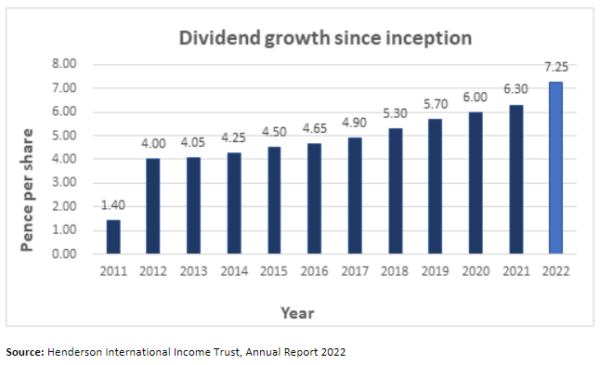Feb
2023
Why dividends matter now more than ever
DIY Investor
14 February 2023
The economic climate of the past few years has been characterised by turbulence and uncertainty. This environment, now compounded by growing inflation and rising interest rates, has left investors wondering how to insulate their portfolios and make the most of their money- by Ben Lofthouse
Against such a backdrop, investors often overlook the strategies that can help them navigate choppy waters. This is not a new phenomenon, and for the seasoned investor, the answer is simple: dividends.
Dividends: a buffer against market volatility
The investment power of dividends is often overlooked, despite the fact they have played a major role in equity portfolio returns for decades. That’s partly because dividends are very much represented as the tortoise rather than the hare when it comes to investment returns.
But, as anyone who has read that fable can attest, slow and steady wins the race. Looking back, dividends have accounted for 40% of stock market returns since 1930 and 54% during decades when inflation has been high – an important point given the current economic climate.1
Investing in companies with a consistent and growing dividend can help investors navigate the current environment. That’s because, during periods of low or below-average share price returns, dividends can act as a buffer and offset the fall the share prices. In essence, investors are being paid to wait until the market normalises. Just of think of it as collecting rent payments from your property.
And the proof is in the pudding, HINT has a strong dividend record. It has grown its dividend every year since inception, and for its latest financial year, it increased its dividend from 6.30p to 7.25p per ordinary share. This is an increase of 15% year-on-year, for those investors worried about income, this is a no brainer. Whilst such an increase might raise questions from some about dividend stability, the revenue return rose by 23% YoY for the latest financial year, more than covering the dividends paid to investors.

Quality matters
Of course, dividends are the end goal, but the quality of the underlying portfolio companies plays a vital role in ensuring that the payouts are stable and consistent. After all, not all dividends are created equal. HINT, for example, focuses quality companies with attractive dividend yields, strong cash flow generation, and the potential to grow capital via earnings and dividends in the future.
They are often leaders of their respective industries, with established competitive advantages. It is the latter of these characteristics – competitive advantage – that has been essential to passing on rising input costs.
With inflation and energy costs continuing to climb higher and supply chain issues persisting, companies with a competitive edge and ultimately pricing power have been able to pass on rising costs further down the chain. As such, they have been able to defend their margins and maintain profitability whilst their competitors have been struggling with cost inflation.
As these companies’ pay out a higher share of their profits as dividend income, it makes them better suited to deal with current and looming volatile market environment. That is because dividends are significantly less volatile than earnings and tend to reflect the medium-term outlook for companies rather than being overly driven by short-term earnings moves.
And lest we forget, dividend-growing/ paying stocks have historically outperformed relative to non-dividend paying stocks during periods of high inflation and rising interest rates. For the income seeking investor – this is icing on the cake.
Facing uncertainty from a position of strength
There’s no doubt that the months ahead are going to be challenging, with a recession now the base case many economies. However, companies will face this uncertainty from a position of strength. Corporate fundamentals remain strong and the outlook for dividends remains encouraging.
Profits are set to end the year around 50% higher than their pre-pandemic levels, and dividend cover remains at record levels. In addition, dividends are expected to come in at £1.25 trillion for the full year.
So, for those looking to shelter their portfolios from the ravages of higher interest rates and inflation, it’s time to look at Henderson International Income Trust.
1 Source: https://www.fidelity.com/learning-center/trading-investing/inflation-and-dividend-stocks
 Ben Lofthouse is Portfolio Manager of Henderson International Income (HINT)
Ben Lofthouse is Portfolio Manager of Henderson International Income (HINT)
More information on Henderson International Income here >
See the latest on HINT from Edison Investment Research here >
Brokers Commentary » Brokers Latest » Commentary » Investment trusts Commentary » Investment trusts Latest » Latest » Mutual funds Commentary

Leave a Reply
You must be logged in to post a comment.